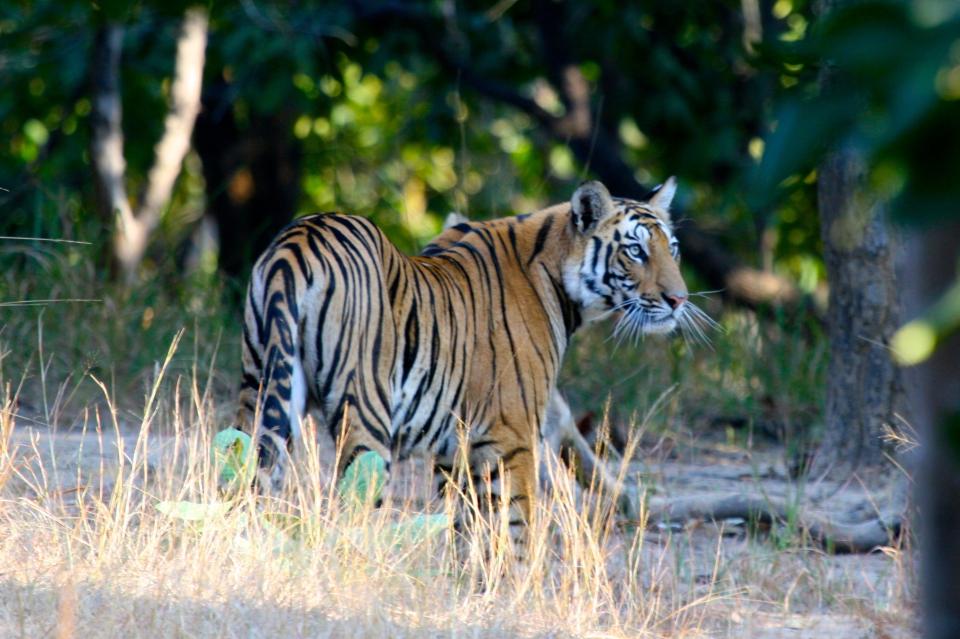
Cost per person is $11,799
Single supplement is $3,350
We will visit THREE famed National Parks.
Bandhavgarh National Park - There is plenty to see in this small park (168 sq miles) set around a historic site, with carvings, temples and fort. This park is consistently known as the Park to have a high concentration of tigers in the designated “tourist zone”, who are very vehicle friendly. Indeed on our investigative trip in February 2011 we saw seven tigers in three days here!
Kanha National Park - This park was created in 1955 and with a buffer zone of over 386 sq miles and a core area of 360 sq miles it is now the largest park in Central India. The park has significant populations of Royal Bengal tigers, leopards, sloth bear and Indian wild dog, in a lush setting of rolling meadows, cool Sal forest and steep ravines. It is a truly picturesque setting to view Indian wildlife, especially the tiger!
Pench National Park - Pench is covered in small hills and is a tropical deciduous forest, dominated by teak trees that lose their leaves in the dry season, making the wildlife here quite visible. Only declared as a National Park in 1983 and elevated to tiger reserve in 1992, Pench National Park is the setting for Rudyard Kipling’s Jungle Book story. The park itself is over 290 sq miles and some 38 species of mammals have been recorded here, including the rarely seen Indian wild dog or dhole.
We will also visit TWO famed archaeological / historic sites.
Khajuraho - is a famous tourist and archaeological site known for its sculptured temples dedicated to Shiva, Vishnu and Jaina patriarchs. The monuments at Khajuraho were designated a UNESCO World Heritage site in 1986. Of the area’s 85 original temples, 22 are still reasonably well preserved. Both internally and externally the temples are richly carved with excellent sculptures that are frequently sensual and, in some instances, sexually explicit.
Taj Mahal - “A teardrop on the cheek of time” is how the famous poet and Noble Laureate Rabindranath Tagore described the Taj Mahal. Built from white marble, it is the mausoleum of Empress Mumtaz Mahal, who died after giving birth to her 14th child (Princess Gauhar Begum). Built over a period of 22 years and involving thousands of artisans from across the world, this magnificent building is considered to be the greatest monument to eternal love, a homage to her beauty and life.
In keeping with the principles of responsible ecotourism:
We will make a donation to the Waste Warriors working around Indian National Parks.
We will employ local people.
We will use locally owned and operated lodges and outfitters.
We will use local goods and services.
This is an ecotour that will make a difference to you and to the places we visit.
Upcoming Dates
Wednesday, February 25, 2026 to Monday, March 9, 2026
Availability — OPEN to enrollment
Itinerary
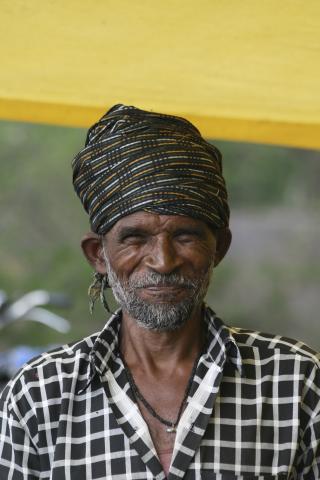
Day 1: Arrive Delhi
On arrival at the Indira Gandhi International Airport, you will be met by our representative who will escort you through Customs and Immigration, making sure you are seamlessly transferred to the hotel.
Delhi is the Capital City of Independent India. It rewards the determined sightseer with more than a thousand monuments and two old capital building complexes - including the present seat of Government, designed by the British architect Sir Edwin Lutyens. Delhi also offers a glimpse into the real India: the labyrinthine street bazaars of Old Delhi, and the temples and monuments of India’s checkered colonial past. In the deepest sense, from Old Delhi’s Red Fort and the Jama Masjid Mosque to New Delhi’s chic art galleries and nightclubs, Delhi is a profoundly Indian city. Turbaned shepherds still lead goats and sheep through ravines in Delhi’s remaining open fields, and even near the airport. On Delhi’s golf courses Mughal monuments share fairways with peacocks. Rajasthani women in bright colored saris and men in dhoti (skirt like wrap) work with outdated tools at construction sites while executives work out on computerized equipment in health clubs. By day, you will see temples packed with the devoted, and by night, discos are packed with the affluent. Delhi is a city on the move and the gateway to India.
The Welcome Dinner is at the Hotel Restaurant this evening - here you will meet your Indian Naturalist / Ecotour leader Harsha Jayaramaih, as well as the rest of the group at dinner.
Overnight at Trident Gurgaon Hotel (D)
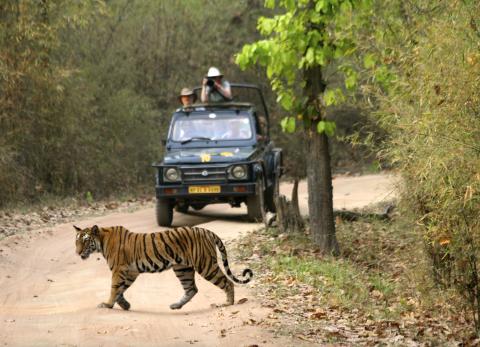
Day 2: Delhi to Pench National Park
Transfer after breakfast to the domestic airport terminal to board the flight to Nagpur. You are met on arrival and drive initially through some industrial areas surrounding Nagpur, before emerging into the countryside and the last hour of our drive is through Pench National Park. Our destination is Pench Tree Lodge in farmland adjacent to the park. We plan to check-in before heading out on our first wildlife drive in Pench here the tropical deciduous forest here is predominantly comprised of Teak trees that shed their leaves each dry season, so wildlife viewing is much easier at this time of year. Our first chance to catch a glimpse of a Tiger!
Overnight at Pench Tree Lodge (B,L,D)
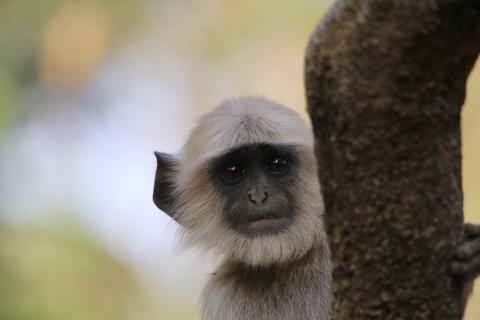
Day 3: Pench National Park
Mornings can be cold inside the forest and slowly warms up as the sun rises, so you will be provided with blankets by the lodge to keep your legs warm. Pench has seen an increase in tiger sightings the past few years, and is also noted for Indian wild dogs, sloth bears and even leopards! All wildlife here is much more visible because so many of the trees lose their leaves here in the dry season. We do a morning safari and an afternoon safari, the advantage of our lodge is that we are located on the quiet (more remote) side of the park, so consequently very few vehicles enter the Park through the gates we utilize, ensuring much more intimate wildlife encounters.
Overnight at Pench Tree Lodge (B,L,D)
Day 4: Pench National Park to Kanha National Park
Today we enjoy a relaxed breakfast at the lodge and depart at 8am for Kanha National Park. The drive today is perhaps the most picturesque journey of the trip - rolling farmland, small villages, fields of wheat being harvested, a truly delightful scene. Our destination is the luxurious Taj property, Banjaar Tola, located close to the Mukki gate of Kanha National Park. Banjaar Tola is a stunning property, a tented camp right on the banks of the Banjaar River, indeed tigers have sometimes been spotted drinking in front of our tents!
We aim to arrive at Kanha in time to enjoy an afternoon safari in the park and will check in to our luxury lodge immediately after our safari. We plan to have cocktails and dinner overlooking the river as we watch animals come down to the riverbanks for an evening drink.
Overnight at Banjaar Tola (B,L,D)

Day 5: Kanha National Park
Early morning we assemble for tea / coffee and then set off for a safari drive. Situated in the Maikal-Satpura Hills, Kanha National Park covers 750 square miles of rich and varied wildlife habitat. The lush sal and bamboo forests, grassy meadows and many ravines provided inspiration to Rudyard Kipling for his famous novel The Jungle Book. Kanha National Park was first established in 1955 and forms the core of the Kanha Tiger Reserve, created in 1974 under India's Project Tiger. Perhaps the Park’s most noteworthy achievement is the preservation of the rare hard-ground swamp deer (barasingha), saving it from near-extinction.
This afternoon we have another safari as we continue our quest to see as many species of Indian wildlife as possible, both sloth bears and India wild dogs are sometimes seen at Kanha, in addition to tigers, Gaur (Indian bison) and so much more.
Overnight at Banjaar Tola (B,L,D)
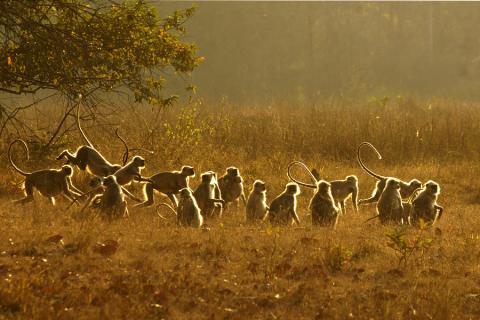
Day 6: Kanha National Park
As yesterday we assemble for tea / coffee and then set off for a safari drive.
This afternoon we have another safari as we continue our quest to see as many species of Indian wildlife as possible, both sloth bears and India wild dogs are sometimes seen at Kanha, in addition to tigers, Gaur (Indian bison) and so much more.
Overnight at Banjaar Tola (B,L,D)
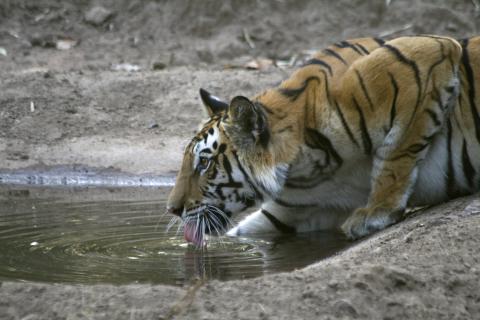
Day 7: Kanha to Bandhavrgarh National Park
We plan for an early departure today headed for Bandhavgarh National Park considered an essential stop for anyone interested in viewing tigers, as it is here that India’s highest concentrations of this magnificent endangered cat have been recorded. Indeed Bandhavgarh was once a prime hunting reserve for royalty - it is alleged that Maharaja Raman Singh himself shot an astounding 111 tigers here! Today it is one of the premier parks noted for tiger protection, and further supports a rich diversity of other animals – some 37 mammal species, among which are leopard, jungle cat, civet, wild boar, sambar, spotted deer, muntjac (barking deer), and sloth bear. There are also some 250 species of birds, as well as butterflies galore!
Our destination this afternoon is the very comfortable Kings Lodge adjacent to the park boundary, we plan to be at Kings Lodge in time for an afternoon game drive. Of course all along the route we will be stopping to take photographs and experience rural India!
Overnight at Kings Lodge (B,L,D)
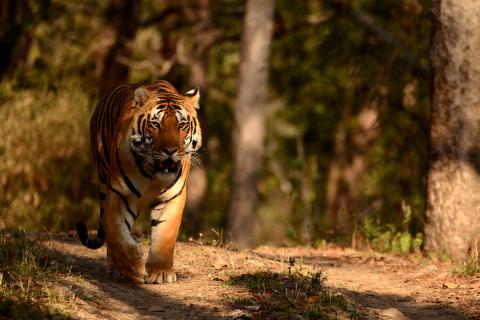
Day 8: Holi Festival at Bandhavgarh National Park
We have planned our India tour to overlap the annual Holi Festival - this ancient tradition marks the end of winter and honors the triumph of good over evil. Celebrants light bonfires, throw colorful powder called gulal, eat sweets, and dance to traditional folk music. We plan to join in the festivities!
This afternoon we plan to have a cooking class with the amazing Lodge chef, and then sample our creations!
Overnight at Kings Lodge (B,L,D)

Day 9: Bandhavgarh National Park
Early this morning we assemble for tea / coffee and then set off for a safari drive in search of wildlife. So popular has Bandhavgarh become for people wanting to see tigers that the park is divided into zones and some zones are further divided into routes - our zone and route to be taken are at the discretion of the Park authorities. We bring breakfast in the vehicle and we return to Kings Lodge for lunch and this afternoon we enjoy a village walk and return to lodge around sunset.
Overnight at Kings Lodge (B,L,D)
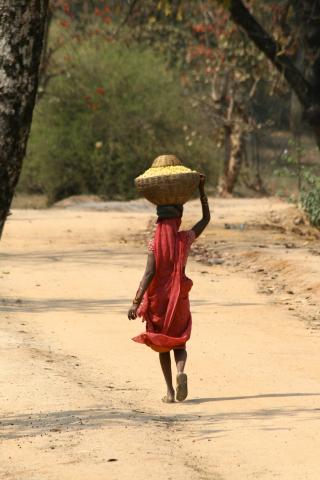
Day 10: Bandhavgarh to Khajuraho
Early morning we again assemble for tea / coffee at and then set off for our last game ride. We return to the hotel for brunch and pack. We then drive to Khajuraho (230 kms, 5.5 hours) and check into our hotel.
This evening, we enjoy the Sound and Light Show - held every evening in the lawned area at the western group of temples. An hour long, it covers the history, philosophy and the art of sculpting of these temples. Narrated by Bollywood legend Amitabh Bachhan, it evokes the life and times of the great Chandela Kings and traces the story of the unique temples from the 10th Century to the present day.
Overnight at LaLit Temple View Hotel (B,L,D)
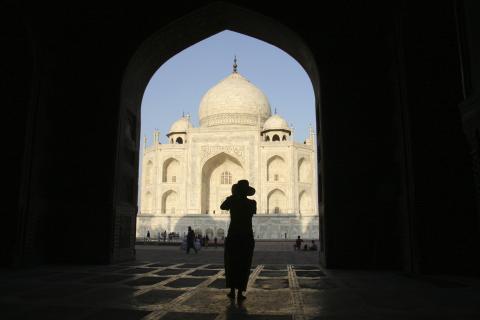
Day 11: Khajuraho to Taj Mahal
This morning we proceed for a guided tour of the temples. Khajuraho’s most striking and best-preserved temples are those of the Western Group which were built between 10th and 12th Centuries. Half a day can be spent exploring these temples alone which are considered to have some of the best temple architecture and artwork in India and which feature the magnificent Kandariya Mahadeo Temple as well as the Lakshman and Vishwanath temples.
After lunch we drive to Jhansi railway station (175 kms, 3 hours) and board the train for Agra. This is the first class Jhansi / Agra - Shatabdi Express - 18:10 / 20:40 hrs.
Upon arrival in Agra we will then be transferred to our gorgeous luxury hotel Oberoi Amarvilas which is the only hotel in Agra to have a view of the Taj Mahal from every single room!
Overnight at Oberoi Amarvilas (B,L,D)
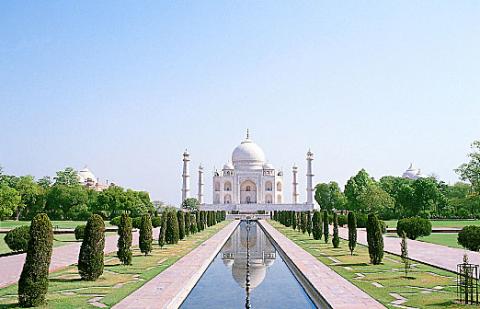
Day 12: Taj Mahal to Delhi
This morning enjoy a sunrise guided tour of Taj Mahal. “A teardrop on the cheek of time” is how the famous poet and Noble Laureate Rabindranath Tagore described the Taj Mahal. Built from white marble, it is the mausoleum of Empress Mumtaz Mahal, who died after giving birth to her 14th child (Princess Gauhar Begum). Built over a period of 22 years and involving thousands of artisans from across the world, this magnificent building is considered to be the greatest monument to eternal love, a homage to her beauty and life.
Late this afternoon we depart for Delhi after a sightseeing of the Agra Fort. The Agra Fort, built by Emperor Akbar is considered one of the most important forts in India and a succession of Mughal emperors made this walled palatial city their home. It is semi-circular in design and has four gates. The buildings inside the fort have a mix of Hindu and Islamic architectures. In fact, some of the decorations feature images of living creatures such as birds, which is forbidden under Islam.
We arrive back to the luxurious Trident Gurgaon Hotel this evening where we began our adventure.
Overnight at Trident Gurgaon (B,L,D)
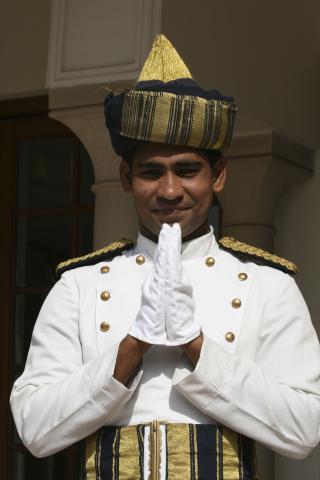
Day 13: Delhi to home or post-trip extension
You can plan your departure for any convenient time today. You will be transferred according to your departure time.
(B)
Travel Information
Thanks for choosing India with Terra Incognita Ecotours, Inc. It is our pleasure to help you plan for your upcoming ecotour. To ensure that your travel arrangements are made to your satisfaction, please take a few minutes to read through this information.
What you need to have with you on your trip:
Passport: If you are a U.S., U.K., Australian or Canadian citizen, you will need a passport, valid for six months from the date of completion of your trip.
It is always a good idea to make a photocopy of your airline tickets and of the pages of your passport that have the number, your photograph and other pertinent information. Keep the copies separate from the originals.
Visas: Please consult the India consulate or embassy nearest you for visa requirements to enter India. If a visa is required, you are responsible for obtaining it.
Documents for children under the age of 18, not traveling with both parents: The U.S. government is increasingly requiring that minors under 18 years of age traveling alone, with grandparents, or with one parent/legal guardian only, carry a notarized document signed by both parents or by the parent/legal guardian not traveling with the child. We suggest you obtain such a document (noting the age of the child, relationship to traveling adult(s), dates of travel, and destination) to avoid potential problems. For example, in the case of divorce, the parent with legal custody must sign the permit, and the accompanying adult must carry proof of this fact. In addition, if the child’s surname differs from that of either parent, you may want to carry the child’s birth certificate.
Emergency Contact number while on your ecotour:
Call COLLECT (813) 476-2810
Practical Information
India is the seventh-largest country by geographical area, and recently became the most populous country with over 1.3 billion people, and the most populous democracy in the world. Bounded by the Indian Ocean on the south, the Arabian Sea on the southwest, and the Bay of Bengal on the southeast, it shares land borders with Pakistan to the west; Bhutan, the People's Republic of China and Nepal to the northeast; and Bangladesh and Burma to the east. In the Indian Ocean, India is in the vicinity of Sri Lanka and the Maldives; in addition, India's Andaman and Nicobar Islands share a maritime border with Thailand and Indonesia.
Currency: The currency of India, is the Rupee (INR). The exchange rate as of May 2022 was 1 US$ = 77 INR. Major credit cards are generally accepted at hotels and larger stores. U.S. dollars are not widely accepted in India, so we suggest you change currency on arrival for smaller purchases such as taxis, refreshments or miscellaneous expenses.
Health: All information we obtain regarding health precautions is received from the Centers for Disease Control in Atlanta at 404.332.4559 or www.cdc.gov.
Please note that Terra Incognita Ecotours, Inc., as a travel company, is in no way authorized to prescribe any inoculations or medications. We recommend that you consult your personal physician for medical advice, showing him or her the brochure that indicates the places you will be visiting. Your physician is most familiar with your personal medical history and is best qualified to determine your particular needs. It is always advisable to have physical and dental check-ups before you leave.
At the present time, no specific immunizations are required for this ecotour, although the CDC recommends the following:
Hepatitis A or immune globulin (IG). Transmission of hepatitis A virus can occur through direct person-to-person contact; through exposure to contaminated water, ice, or shellfish harvested in contaminated water; or from fruits, vegetables, or other foods that are eaten uncooked and that were contaminated during harvesting or subsequent handling.
Hepatitis B, especially if you might be exposed to blood or body fluids (for example, health-care workers), have sexual contact with the local population, or be exposed through medical treatment. Hepatitis B vaccine is now recommended for all infants and for children ages 11-12 years who did not receive the series as infants.
Malaria: your risk of malaria may be high in parts of India. See your health care provider for a prescription of an anti malarial drug.
Rabies, pre-exposure vaccination, if you might have extensive unprotected outdoor exposure in rural areas, such as might occur during camping, hiking, or bicycling, or engaging in certain occupational activities.
Typhoid vaccine. Typhoid fever can be contracted through contaminated drinking water or food, or by eating food or drinking beverages that have been handled by a person who is infected. Large outbreaks are most often related to fecal contamination of water supplies or foods sold by street vendors
As needed, booster doses for tetanus-diphtheria, measles, and a one-time dose of polio vaccine for adults.
Please also note:
A certificate of yellow fever vaccination may be required for entry into certain countries in South-east Asia. For detailed information, see Yellow Fever Vaccine Requirements and Information on Malaria Risk and Prophylaxis, by Country. Also, find the nearest authorized U.S. yellow fever vaccine center.
Swimming: There may be several opportunities to swim during the ecotour. You should bring a swimsuit if you may swim. Since you will have time to swim, for added protection from the sun you may wish to wear a T-shirt while swimming.
Time Difference: India is 5 and 1/2 hours ahead of Greenwich Mean Time.
Weather: India's climate is strongly influenced by the Himalayas and the Thar Desert, both of which drive the monsoons. The Himalayas prevent cold Central Asian katabatic winds from blowing in, keeping the bulk of the Indian subcontinent warmer than most locations at similar latitudes. The Thar Desert plays a crucial role in attracting the moisture-laden southwest summer monsoon winds that, between June and October, provide the majority of India's rainfall. During our visits in March, the mornings can be quite cold, the evenings will be cool, and the days will warm quite quickly, getting hotter quickly in late March.
Please remember that the sun’s rays are more vertical than you may be used to, so you can sunburn more easily. Be careful of the midday sun.
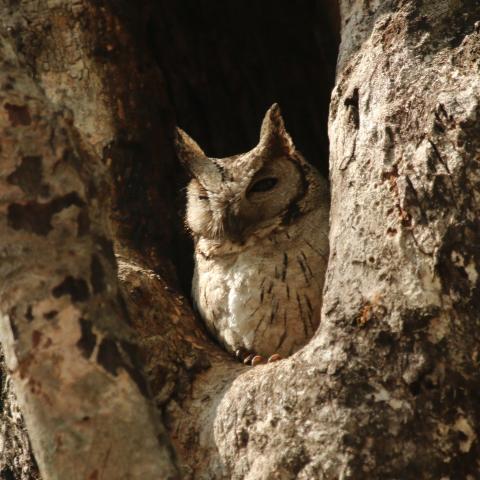
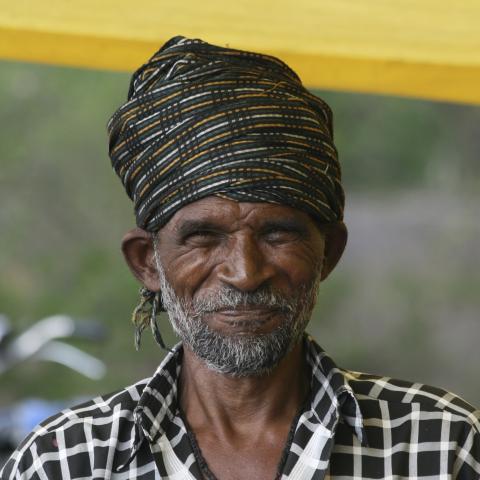

Lodging Info
Trident Gurgaon, Delhi
Trident Gurgaon is conveniently located close to both the Indira Gandhi International Airport and the Delhi domestic airport terminal. Boasting plush and spacious interiors, lies an oasis where you can smell the fresh grass, hear the birds sing and simply pause for pleasure. Designed by Thai architect, Lek Bunag, Trident, Gurgaon is low-rise and spread over seven acres. You will find influences of Moroccan, Mughal and Rajasthani style in its architecture. The beige dome-like traditional exterior houses 136 contemporary rooms, furnished with all the modern amenities for discerning guests, including complimentary high-speed Internet for up to four devices. Trident, Gurgaon ranks amongst the best hotels in Delhi.
Pench Tree Lodge, Pench
Located in the Karmajhiri area of Pench National Park and has been built on a large forested estate of 36 acres. This is the first lodge to be set up in this underdeveloped zone of the park, which means more intimate wildlife encounters, and supports our conservation policy of not overcrowding areas and making them unsustainable with over-exposure to ecotourism. Only 6 Tree Houses have been built on this large property, also ensuring a minimal footprint in the area. All tree houses have air conditioning, en-suite bathrooms, hot and cold water, 24-hour electricity and are very luxurious!
Banjaar Tola, Kanha
Revel in chic and glamorously designed tented suites at Banjaar Tola at Kanha National Park. Each of the jungle lodge’s stilted tents features spectacular glass doors that lead out to a floating verandah with a stunning view of the Banjaar river and the core zone of Kanha National Park. In addition ot spectacular tented suites, Banjaar Tola prides itself on gourmet dining, each dining experience is unique and private dining, an art form. Explore regional food from Chhattisgarh handcrafted from farm-to-the-table ingredients by our expert chefs. Experience dining by the pool and jungle dinners—amidst the sal forest, lit by hundreds of lanterns. This is the ultimate in luxury at any of the tiger reserves!
Kings Lodge, Bandhavgarh
Kings Lodge, Bandhavgarh is spread over 10 acres in the Rancha village surrounded by Sal forested hills. The Lodge is built using eco-friendly materials and has eco-sensitive waste disposal systems. There are 4 cottage rooms and 8 stilt rooms with en-suite modern bathrooms. All rooms have air conditioners, mini-bar, a large verandah with great views of the forest, writing table and chair. All bathrooms are with 24 hour hot and cold water, bathtubs and all modern facilities. Meals are served in the communal dining room. The Lodge has a well-stocked library, a dip pool and a watchtower. Managed by a team of experienced naturalists – with a focus on birding and an overall wildlife experience.
Oberoi Amarvilas, Agra
Located only 600 meters from the Taj Mahal stands Amarvilas, the Oberoi Groups luxury resort. Here discerning travelers can now appreciate the fabulous Taj Mahal while enjoying world-class luxury. The hotel has been designed to give guests uninterrupted views of the Taj Mahal from all 106 guest rooms and suites. The lobby, bar and tea lounge also offer spectacular views of the world-famous monument. Elaborate gardens, terraced lawns and fountains, reflecting pools and pavilions complement the classical architecture of the hotel. The rooms at Amarvilas uphold the famed Oberoi tradition of luxury and comfort. The distinctive ambience combines old-world charm with state-of the-art conveniences. Each room has an entrance foyer, leading to a walk-in closet and the living area. Burma teak flooring and hand knotted rugs create a warm and welcoming atmosphere. The elegantly appointed interiors include an Indian style bed covered with hand woven fabrics, a richly inlaid desk, a luxurious lounge chair with an ottoman, and a marble inlaid coffee table. The bathrooms are luxuriously equipped in white marble and turquoise glass panels, with a separate shower cubicle and a large vanity counter holding deluxe toiletries. All rooms also have the most modern conveniences such as voice mail, a data port for computers, satellite television, digital videodisc players, and in-room electronic safes.


